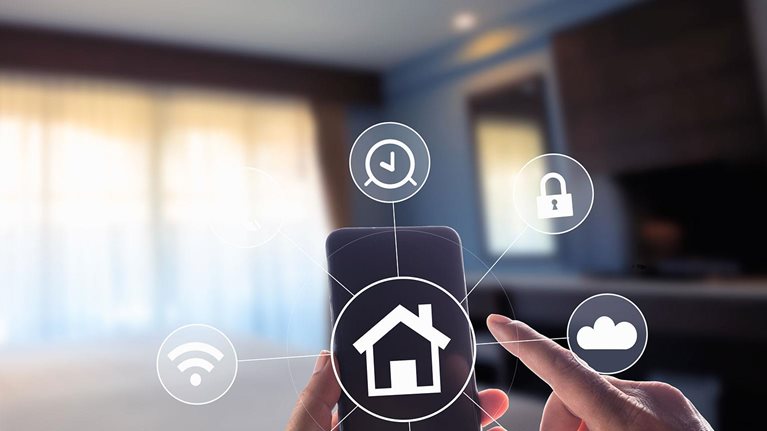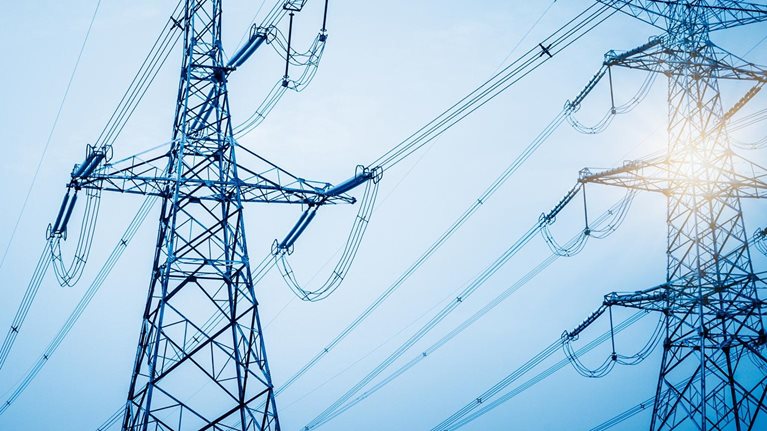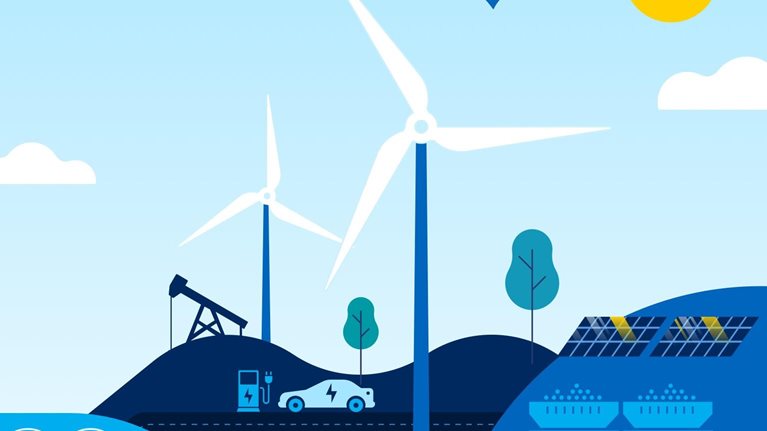In the wake of deregulation, the energy sector, like most consumer-service industries, has been experiencing an influx of new competitors and a steady rise in customer churn. Switching is also accelerating under the influence of digitization, and especially the use of price-comparison websites such as Verivox in Germany, Power2Switch in the United States, and iSelect in Australia. As a result, energy providers are feeling pressure on their prices and margins.
In this challenging environment, their top priority is to keep customers from churning. Long-term customers with old contracts can be many times more valuable than newer customers, and winning new customers is a costly undertaking. Fortunately, today’s companies have a new tool at their disposal to help them retain old customers and acquire new ones: personalization. By adopting automated algorithm-driven processes to tailor appeals to individual customers based on their behavior, companies can manage their customer base more effectively and prevent churn.
Some energy companies have started experimenting with simple forms of personalization, such as splitting their customer base into two subsets to test two different messages for a price-adjustment campaign. However, most companies still send out identical messages to all their customers. Although developing personalization capabilities may seem daunting at first, getting started is more manageable than it seems—and it gives companies a real edge in winning, managing, and retaining customers. Our research shows that companies that provide effective personalized content can increase sales by 10 percent or more, as well as delivering five- to eightfold improvements in their return on marketing spending.1
Where personalization began
Personalization has its roots in retail and consumer goods, with the tracking of customers’ online and offline behavior to capture valuable information about their preferences, attitudes, and willingness to pay. Amazon, for instance, can draw on a vast store of past purchase decisions to estimate what an individual is prepared to pay for similar products. Using advanced analytics, it examines the drivers of past purchases—not only a customer’s buying history, age, gender, and location but also financial factors such as purchase value and monthly or yearly shopping expenditure—and then “trains” models to use this information to calculate the likelihood of a new purchase. It can then tailor an offer to the customer and later update the model to reflect whether or not the customer made a purchase.
Would you like to learn more about our Electric Power & Natural Gas Practice?
Needless to say, energy is different from retail, with a more limited set of offerings. But energy providers often have a more complete picture of their customers than retailers do, with years of contractual relationships and behavioral data on energy consumption to draw on. However, they often struggle to know how to capture the right data on customer behavior and generate valuable insights from it.
What customers want
Personalization is important not only because businesses profit from it but because customers expect it. As consumers are exposed to more personalized advertising through digital and other channels, their expectations increase. Our research shows that 74 percent of customers find mass marketing frustrating. Many of the companies we work with have seen a steep decline in the effectiveness of newsletters, birthday mailings, and similar campaigns.
Personalization can play a central role in customer acquisition. Energy companies can, for instance, use street-by-street location and housing data to target online campaigns to customers who use more energy than average and might be interested in products such as photovoltaic (PV) installations and energy-storage systems. But the benefits of personalization at scale extend beyond customer acquisition to improvements in upselling, cross-selling, and retention. Analyzing past behavior helps to shed light on whether a given customer might be interested in enhanced offerings such as smart-home devices. When that customer’s contract comes up for renewal, the energy provider can use that information to make a tailored offer such as bundling the electricity contract with a smart-home device or heating system.
Despite the advantages of personalization, energy companies often don’t feel confident about tackling it, or worry they might upset customers or lack the data or expertise they need. We find many leaders believe the key to success is to introduce a whole new IT solution and technical know-how. In our experience, though, the biggest barrier is mind-set—in particular, developing an agile test-and-learn culture. In practice, getting started is simpler than companies might expect.
What makes personalization successful
From our work with clients across sectors, McKinsey has identified the four factors that matter most to a successful scalable approach: data, triggers, culture, and methods.
1. Getting the right data (not more data)
Having the right data is key to a best-in-class personalization strategy, but it can pose a challenge for utilities. One common concern is how to clean up their data to eliminate perceived inconsistencies and gaps so they can start to generate insights and personalize content. Companies worry that merging data from multiple databases will be difficult and time-consuming and see building a data lake as the only solution. In a recent survey, 67 percent of participants said their biggest personalization challenge was using the right tools to find and merge data.2 But our experience shows that concerns like these are misplaced.
Companies don’t need a fully developed data lake or even a lot of data to conduct their first pilot, for instance. One energy company we worked with found it needed only a handful of variables to identify customers with an 85 percent probability of canceling their electricity contracts. Intervening quickly with a personalized approach to these customers reduced churn by 15 percentage points compared with a control group. Companies that embrace simple, pragmatic steps like this can see tremendous improvements in customer retention.
As energy companies have much less data on consumer behavior than retailers do, it makes sense to gather information on every contact with a customer—whether it’s an incoming call about a billing query or an outbound call introducing a new loyalty program—and integrate these data into a single overarching customer view. Valuable insights can be gleaned simply by combining different types of internal data in this way.
For energy companies venturing into personalization, the first step is to focus on storing, selecting, and analyzing the internal data they already have at their disposal. By combining basic customer information (age, gender, postcode) with behavioral information (energy consumption, billing information, bad debt) and interaction data (website browsing and search behavior, number of telephone inquiries), companies can create a comprehensive view of each customer. By analyzing this view from different angles, they can identify customers at risk of churn and develop new bundled products to offer to segments with relevant product preferences and willingness to pay.
The second step in personalization involves the use of analytical approaches. Simply by applying descriptive methods to data, companies can derive important insights about distributions and frequencies. Going further by incorporating advanced data-mining or machine-learning techniques makes it possible to predict customer behavior more accurately and efficiently. Metrics such as customer lifetime value or upselling probability can be developed and put to use in a matter of weeks.
In the third and final step, companies enrich their internal customer view by drawing on external information to personalize offers still further. For an energy company, relevant external data might include a customer’s buying power, demographic group, and housing characteristics (flat or house, type of roof, and so on)—all relevant factors when deciding who should be sent offers of, say, a PV installation.
2. Identifying the right triggers for successful customer contact
Finding the right moment to contact a customer is key. That means identifying and testing specific events that can be allocated to a specific customer—a form of trigger-based marketing that is relatively new to the energy sector. Examples of triggers might include visits to web pages about added-value energy products; online searches related to house moves; clicks on FAQs about terminating a contract; or “bill shock” when the year-end or half-year bill arrives. The company then decides on an appropriate response to such triggers. For example, if a utility tracks a customer browsing through its online FAQs and clicking on questions about home moves, it can send her an automated message promoting its home-moving service and a new tariff to encourage her to continue using its services in her new home.
This kind of approach is fairly well established in telecommunications, another contract-based industry. For instance, a customer who uses a comparison site to check out new mobile-phone contracts may get a call from his current provider shortly afterwards with an attractive offer to extend the contract. Typical acceptance rates for offers like these range from 20 to 30 percent.
Customers leave countless traces that can serve as triggers and provide clues as to when they may be reachable and receptive to offers. A good way to start is to think about customer journeys, analyze customer touchpoints, and consider what motivates customers’ behavior and how to influence it. In this way, companies can develop hypotheses about relevant occasions and compile them into a “cookbook” that identifies triggers and sets out appropriate responses to them. The trick is to learn from experience and see how customers respond when approached. Sometimes it takes four or five iterations to extract 80 percent of the value of an identified trigger.3
Responding quickly to events matters more than crafting a perfect response. In our experience, replying within 24 hours is more effective than sending a more polished message later. But customers vary in what they see as the ideal response time, and long-term loyal customers may react differently to a message than one-time bargain hunters do.
3. Embedding the right culture for testing and learning in agile teams
Many energy companies still organize the work they do into functions, which helps them maintain a consistent direction for approaching customers over the long term. But creating individually personalized campaigns requires a new way of operating: work fast, test many campaigns in a short time, and scale up quickly. That calls for teams of people from across marketing, analytics, channel management, IT, and other functions. And to work in an agile way, these teams must be close to decision makers, have short decision paths, and operate independently from the rest of their organization.
Many of the successful efforts we’ve seen are based on “pods” of colleagues united to perform a specific task. Such efforts start with a use case, follow key performance indicators that are examined in regular sessions, and promote competition among groups of colleagues in a test-and-learn environment. For most energy companies, this approach requires a radically new mind-set: one that is comfortable with learning from mistakes and trying things that may not make sense at first sight. A test that doesn’t work as planned is seen as a lesson, not a failure. Perfectionism is a trap, especially during early pilots. The focus is not on getting it right but on testing and refining many pilots simultaneously.

How utilities can keep the lights on
Following a standardized process, teams test triggers in pilot campaigns and document what worked and what didn’t, using comparisons with a control group to assess customers’ responses. They record their findings in a “learning road map” that guides the rollout of successful campaigns to a broader customer base, and document and refine the results all over again to ensure continuous improvement. As a pod becomes more effective, it is able to launch more and more campaigns: perhaps as many as 20 to 30 per month, compared with two to five for a conventional marketing team. Getting to this point requires full support from top management, especially in the transition from initial pilots to complete campaigns.
4. Using the right methods and technology to scale up effectively
Many energy companies get stuck in pilot mode, running a few successful campaigns but struggling to roll them out across their customer base. To scale up, they need to take three actions: update their data in real time and automate their algorithms, ensure their system infrastructure is stable, and create more interfaces to their sales channels.
Real-time data and automated algorithms. To predict the behavior of individual customers—such as whether they may cancel an energy contract or purchase smart-home products—companies need data that are close to real time. An automated interface that collects data at the right points and integrates them into algorithms enables companies to constantly update their view of a customer’s likely behavior. These algorithms must be designed to handle ongoing data updates without manual intervention. An interface to customer-relationship-management and campaign-management systems is also needed to receive this information and save it in the right place for each customer.
System infrastructure. Real-time data handling creates new IT challenges. Transporting gigabytes of data requires adequate storage capacity and efficient transmission systems. Interfaces are needed for sharing information between different stages and formats: raw data, the customer view, calculations of results, and campaign management.
Channel interfaces. Having identified promising pilots, companies need advanced execution capabilities to expand their campaigns to a broader audience. Call-center staff launching outbound campaigns may need training, reorganization, and new incentives, for instance. Campaigns using mail or email may place additional demands on hardware, software, and services such as printing. Content may vary from one channel to another, creating a need for more content-management employees.
Putting these elements in place takes effort, but companies shouldn’t be deterred by worries about the scale of the task. Simple actions can be effective in the early stages and yield results that provide momentum for more challenging work ahead.
As we have seen in more than 100 projects over the past five years, and in the energy sector, personalized marketing brings considerable benefits. Companies from a range of sectors have seen sales rise by 15 percent, marketing efficiency improve by between 10 and 30 percent, and customer acquisition costs fall by almost 50 percent. Many energy companies already possess the analytical and technical skills they need to start tapping into this enormous potential. Now they need the courage to leave business as usual behind and take the first step on their personalization journey.


